
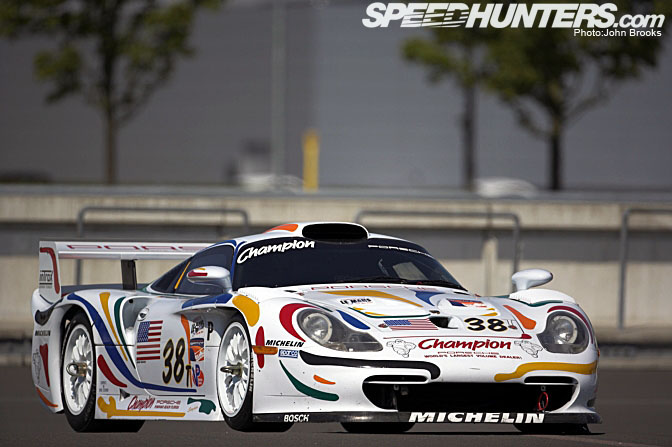
Seeing old race cars for the first time in ages is a bit like bumping into an old flame, there is a natural tendancy to don the rose tinted spectacles, remember the good times and forget the bad. Racing imitates Life.
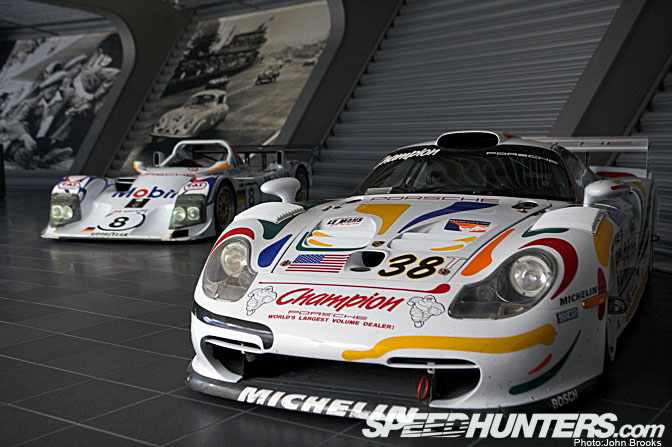
Those of you paying attention will know that Rod, Antonio and I were guests of Porsche AG at their Leipzig Factory earlier this year. Like all good hosts they made us feel very welcome and when they showed us up to the museum/display area it was an opportunity to meet up with some old friends, the Dauer 962, the TWR Joest WSC and of course the Champion Porsche 911 GT1 Evo. The distinctive livery of Dave Maraj’s team is unmistakable, having graced many Porsches and Audis in Endurance racing both sides of the Atlantic, culminating in a overall win at Le Mans in 2005.
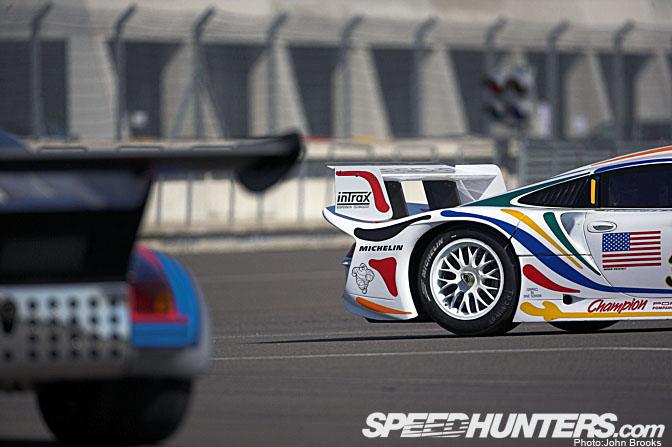
But back to the 911 GT 1………..where did it come from?
The Fall………By 1992 the premeditated destruction of Group C Sportscar Championship by the FIA in favour of promoting Formula One brought the end of endurance racing in Europe, only Le Mans was strong enough to survive. The final formula of 3.5 litre F1 engined cars and high tech cars proved way too expensive even for manufacturers and there were no cars for privateers to buy, despite a valiant effort from Lola, so the grids dwindled to single figures.
The impulse to race long distances as opposed to sprints still existed and as ever where there is a will there is a way. Three Musketeers in the form of Stephan Ratel, Patrick Peter and Jurgen Barth launched the BPR Series in 1994. It was aimed at providing 4 hour GT races with 911s and Venturis as the staple diet on track. Barth, an ex Le Mans winner, was Director of the Customer Competitions Department at Porsche and Ratel was an executive/investor in the Venturi project, so the series gave them both a revenue stream. In 1995 the BPR expanded in both numbers and importance with the arrival of the McLaren F1 GTR and the Ferrari F40 and the addition of professional teams to run them.
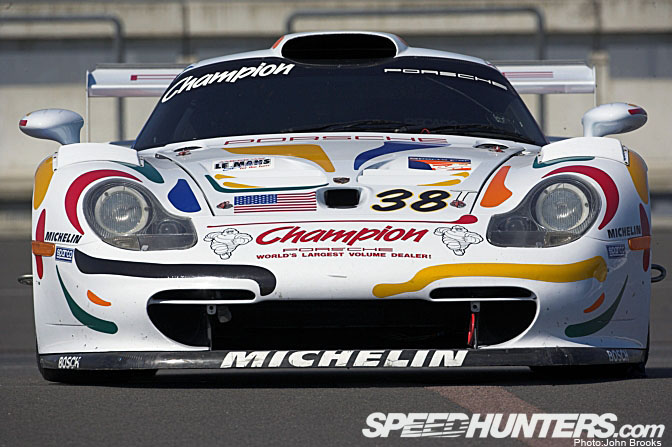
Of course the arrival of the Woking supercar and the upgrade to Evoluzione for the F40 made the 911 somewhat second class even in the fearsome GT2 spec. A BiTurbo variant was explored but in reality there was no way that a 911 was going to get on terms with a F1 GTR with its carbon fibre chassis, mid engined layout and central driving position. Finishing down the order is not what Porsche or their customers had come to expect, so as the saying goes “Something must be done”
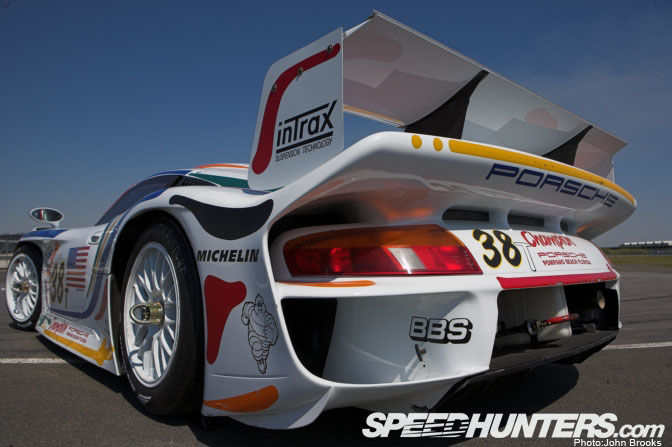
The solution was to create a mid engined supercar, which had as much in it in design terms from the 962 as the 911, no matter what was said at the time. The front unibody and windscreen (derived from the current 911) was attached to a steel subframe and behind that was a 3.6 litre twin turbo engine. In reality the car was a proper racing car but in order to get the car homogated as a GT car a road going version had to be produced. This completely undermined the principles that BPR had hitherto been run on, ie. take a real road going GT and adapt it for the track not homologate a racing car for the road. It would prove the undoing of a very fine race series.
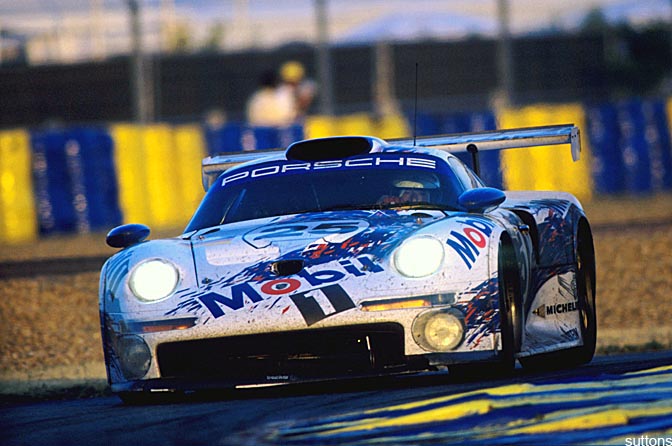
Initially the plan was to run the car at the 1996 Le Mans with outright victory the aim. However the opposition was not just the slower GT cars such as the McLarens and F40s but also prototypes such as the Ferrari 333SP and the TWR Joest Porsche WSC95. The latter would prove to be too well run, too fuel efficient and too fast for the Werks GT. So the 911 GT1 had to settle second and third overall, triumphant though in the GT class.
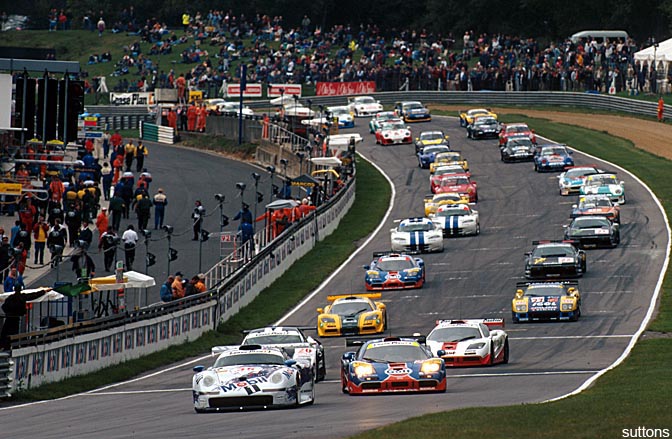
After La Sarthe the fun and games really started. Porsche stepped up the pressure on the BPR to allow the 911 GT1 to race in BPR, Jurgen Barth’s position was somewhat compromised with his dual roles and loyalties. The exisiting teams, still reeling from the drubbing they had received in France, were adamant that the 911 should stay away, it was not eligible they argued and was outside the spirit of the regulations. As a temporary solution, and in order to not destroy the 1996 title race, eventually the Porsche was allowed to start but would not be able to score points. At the first race after the decision, Brands Hatch, Stuck and Boutsen drove away from the opposition as if in a different class, a feat that they repeated at Spa a few weeks later. It was a drive in the country with both pilots barely breaking into a sweat.
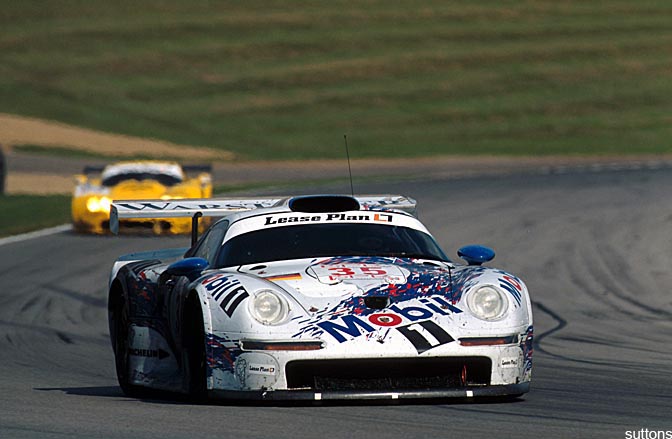
The atmosphere in the paddock grew increasingly rancorous and poisonous, a split was on the way. The BPR would lose Patrick Peter and become the 1997 FIA GT Championship under the guidance of Messrs Ratel and Barth, where it has remained since. There is an old saying warning those who desire something strongly to beware of getting what you wish for and Porsche Motorsport got that in spades for 1997.
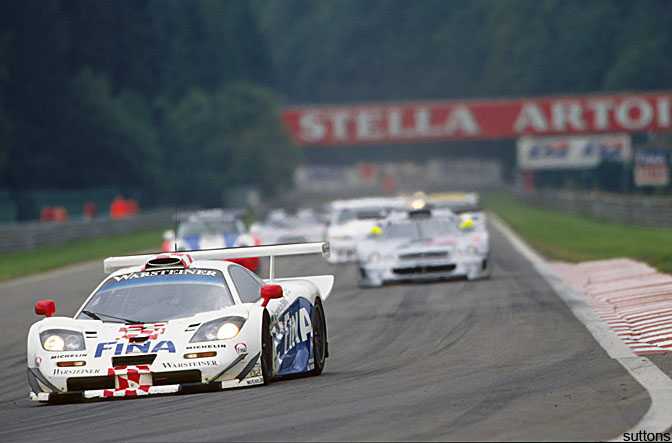
From the outside the 1997 FIA GT Championship was fantastic, factory supported GT racing featuring supercars cars from Porsche, BMW, Mercedes, Lotus, Chrysler and Panoz. But there was a rotten core to all this, a road car was to be built as the foundation for homologation but the time limit for presenting the car to the FIA was eventually set at December some months after the Championship was decided. BMW were outraged at the advantage handed to their rivals from Stuttgart just as the season got underway. As to Porsche they did not fare so well with the regulations on engine power favouring normally aspirated entries and despite a development to an Evo specification they were not really competitve with the Schnitzer McLaren BMWs or the AMG Mercedes. Furthermore they had sold up to 10 cars to privateers who also found that they were bog slow, and having spent a fortune, collectively they were not happy bunnies.
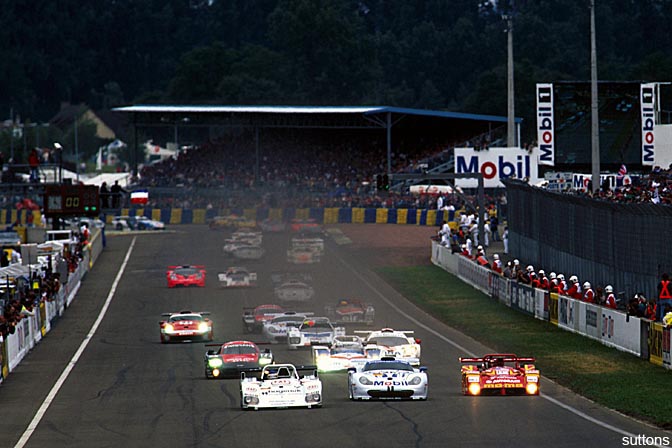
So as ever Porsche looked to victory at Le Mans to rescue their season, a win in the French Classic covers a multitude of sins, ask Audi this year. The opposition was again the prototype Ferrari 333SPs and the TWR Joest Porsche plus a trio of Nissan GTs run by TWR. The tactics of the 1996 winners had been taken into account by the Werks, they had the speed and the fuel economy to handle the Joest car, did they have the reliability? The simple answer was no. Bob Wollek hit the barriers at Arnage with 8 hours to go while comfortably leading his team mate and the rest of the pack, driveshaft failure or driver’s error, it depends who you ask or believe. Some 6 hours later Ralf Kelleners was in cruise mode heading for the chequered flag when cresting Les Hunadieres’ Hump a fuel line split and the car went up in flames, leaving the way clear for a second Joest win. Incroyable!

The disaster of 1997 led to the development of the 911 GT1 98 for the follwing year. Initial reliabilty issues handed the AMG Mercedes team the first two races and thereafter it was a clean sweep for Stuttgart in the FIA GT Championship. At Le Mans however the reverse was the case. Against the strongest opposition (BMW, Mercedes. Toyota and Nissan factory efforts) Porsche triumphed………..who remebers the 98 FIA GT Championship now?
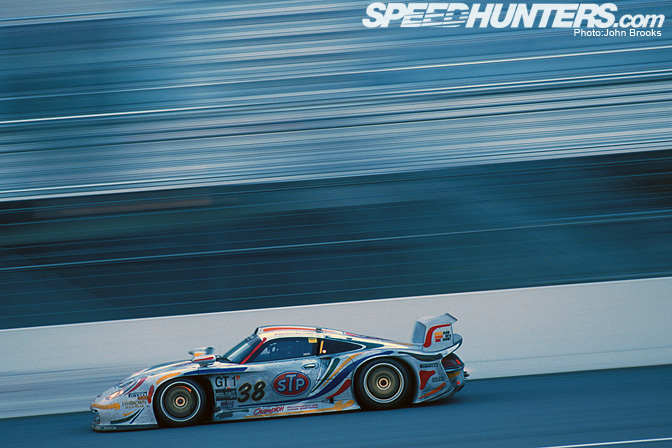
The old cars were stuffed into garages or sold across the Atlantic. In North America 1998 there was a multitude of series and races sanctioned by SCCA, USRRC and PSC that the 911 GT1 appeared to be eligible to race in. And this how I first encountered the Champion car, at the 1998 Daytona 24 Hours.
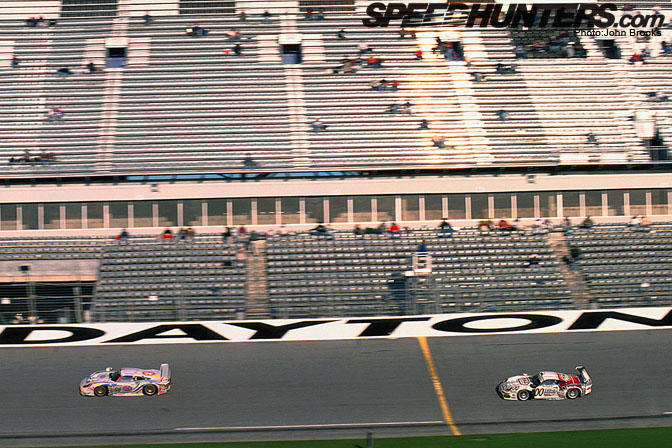
At that race there were two other 911 GT1s, an Evo for Jochen Rohr and a old spec for Labre Competition. Late rule changes (yes at Daytona!) imposed on the GT1 class effectively excluded them from a real shot at overall victory, politically it was expedient for a prototype to be the car driving into Victory Lane at the Daytona International Speedway.
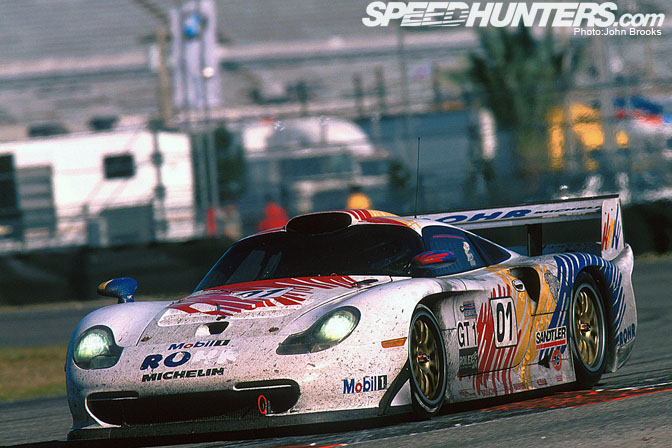
Despite there being three Ferrari 333SPs and a brace of Dyson Riley & Scott Fords, all of whom had much greater pace than the Porsches, the GT1 nearly snatched victory in the time honoured tortoise/hare mode.
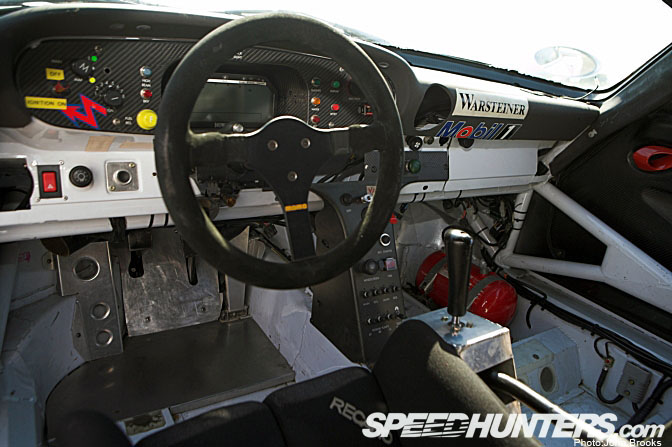
Late in the race suspension problems for the Moretti Ferrari 333SP caused a few missed heartbeats but repairs were effected in time for the Italian to take a popular win. Second place was the reward for the Champion team with their 5 driver (?) team of Allan McNish, Danny Sullivan, Jorg Muller, Dirk Muller and Uwe Alzen who finished 36 laps up on the Labre 911 back in third.
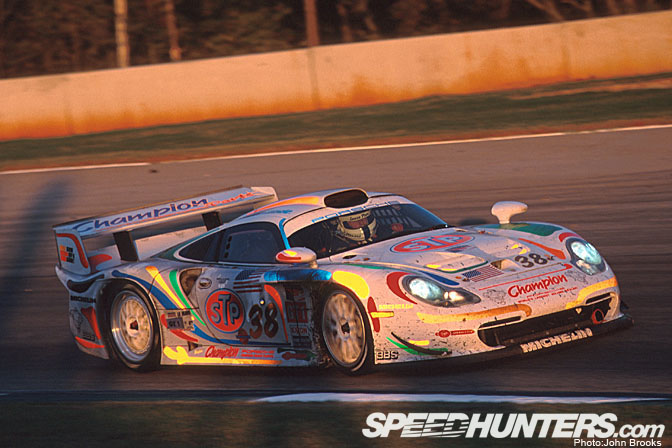
My next encounter with the Champion car was at the inaugural Petit Le Mans held at Road Atlanta in the fall of 1998. This race was to be the overture for the American Le Mans Series, which is so successful today. The dayglow car was outclassed by the more modern GT1 cars such as the Werks GT1 98 and the Panoz GTs but at the finish the old girl was still there up on the podium with a third overall and another class win. It had not fallen apart or flown.
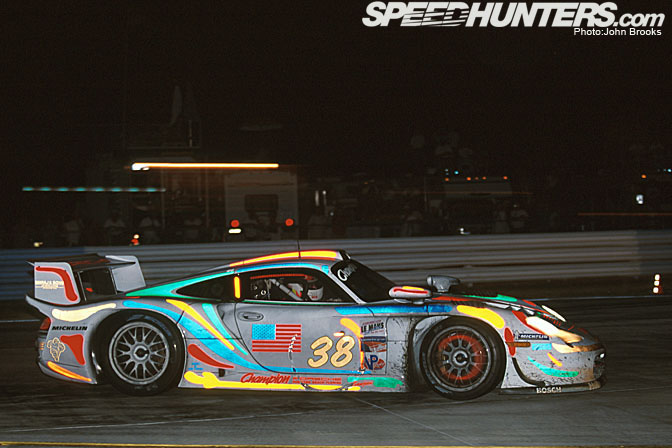
And that might have been that, but Dave Maraj’s car reappeared at Sebring in 1999 to challenge for the GT class of the ALMS, except that the 911 was judged to be a prototype and forced to compete with the BMWs, Audis and Panoz in the top class. So despite having Allan McNish and Ralf Kelleners to steer the beast there really was no hope of a decent result.
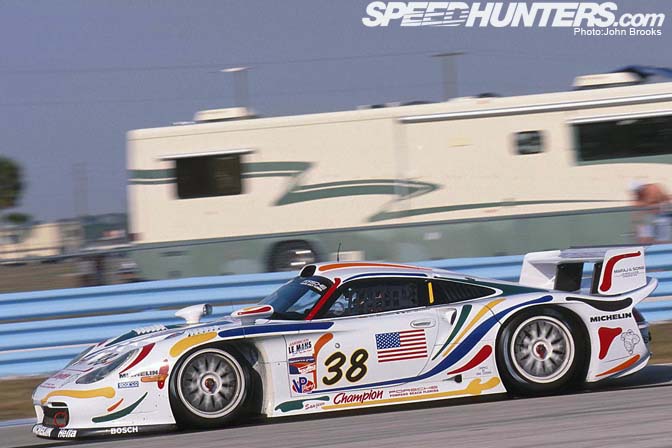
1999 was the first season of the ALMS and like many Europeans I flew back and forth across the Atlantic as the races had a strong European element to them, the series has always been cosmopolitan by American standards.
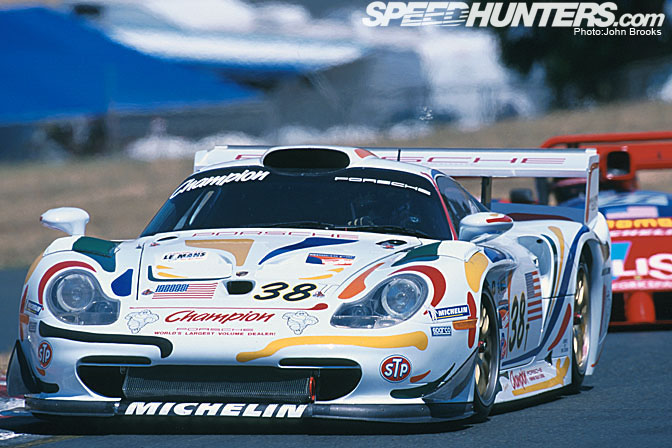
Sears Point, Portland, Laguna Seca, Las Vegas the circuits rolled on, the air travel getting less and less “Jet Set” as the miles clocked up but still 38 would be there in its dayglo warpaint.
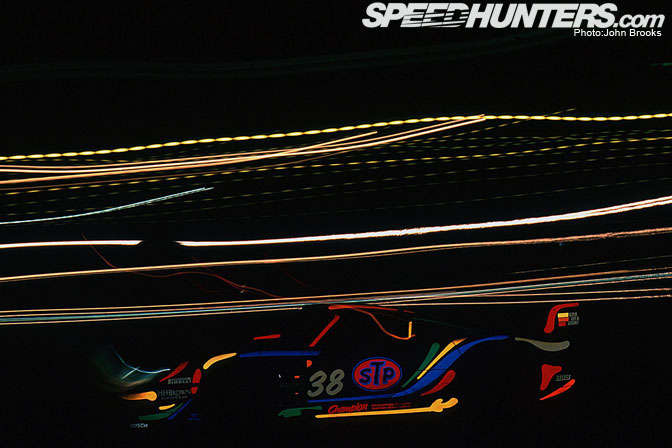
OK by the high standards of Porsche Motorsport the 911 GT1 was not as successful as it should have been.
However it is still a very elegant car, a fine example of a time when GTs were the top class and I am sure that it will age better than the open top cars, time will tell.
John Brooks






As always Mr. Brooks your articles are top notch and incredibly well told. I would like to make a notion that the last picture be made into a desktop wallpaper! Appreciate the awesome writings!
Here's to the weird going pro!
Walter
I agree with sir Walter, that last photo would make a great wallpaper.
Also, what does the term "Evo" mean?
Waaaoo ! A fantasttic "news" that i've just heard on radio 5 mns ago = Due to exceptionnal technicals reasons ( mainly because of the financial crisis , if i understand correctly* ) and for the first time of history , september 2009 will be 60 days long ! :D)))
What a cool news ! i was affraid to stop reading such fantastics articles with so magnificient pictures in 24H00 , but......
* I think they need a bit more time to find another couple of zillions......( some 120m long yachts need to be repaint !)
Ouch , sorry guys , Porsches always drive me MAAAAAAAAAAAAD !
Evo = Evolution
Porsche month on Speedhunters was packed with features and we couldn't fit everything into one month
transition n. 1. change or passage from one state or stage to another.................if one world encapsulates
transition n. 1. change or passage from one state or stage to another.................if one world encapsulates